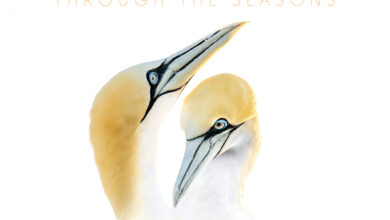All Alone with a Solitary Sandpiper – Reflections of the Natural World
One Moment in Nature is a reflection back in time to a moment of discovery as I explored the natural settings around me. Through the sharing of this moment, is my hope that readers will become motivated to learn more about our environment and its inhabitants, and become passionate advocates for conservation. One Moment in Nature is a Reflections of the Natural World Blog Post Series by Jim Gain
THE SOLITARY SANDPIPER MOMENT
Birdwatchers often refer to uncommon or rare species they encounter as “good birds.” Bumping into other birders in the course of an outing invariably results in the question “Have you seen any ‘good’ birds?” This of course is not a refernce to their behavior, but to how uncommonly they are found. Good = Rare. On this particular morning I was cruising the sewage ponds in Ceres (YES, that is a thing for birdwatchers) I happened to glance down at the shadows of the corner of the pond right next to me and I noticed a couple of Lesser Yellowlegs in with a small flock of Great Yellowlegs. For a size comparison, Lesser Yellowlegs are roughly 25% smaller than Greaters and they are regular this time of year, but less common. One of the “Lessers” seemed different. Like the analogy “One of these is not like the others…” It seemed definitely smaller in size with a slightly thicker bill. And that eyering! Immediately I realize that I have a really “Good” bird, a SOLITARY SANDPIPER! In this case, good referred to the fewer than 10 Stanislaus County records in the past 50 years. While I could see most of the field marks needed to fully identify it; bold eyering, short yellowish bill, spots on the back and yellowish green legs, I knew I needed one last mark to clinch the ID, the upper tail.
While both Greater and Lesser Yellowlegs have a mostly all-white tail in flight, the Solitary Sandpiper sports a dark patch that runs down the center of its tail, breaking the mostly white splash as it flies. Catching a good photo of a bird in flight is tricky, but fortune favored my endeavor and I successfully checked off that last field mark.
ABOUT THE SOLITARY SANDPIPER IN CENTRAL CALIFORNIA
In California’s Central Valley, the Solitary Sandpiper is a modest but regular migrant, passing through primarily during spring and fall. Unlike many shorebirds that congregate in flocks on open mudflats, this species lives up to its name—typically encountered alone or in very small numbers. It favors quiet, freshwater habitats with dense vegetation, such as flooded ditches, ephemeral pools, and wooded wetlands. Rice fields and slow-moving streams with muddy margins also provide suitable stopover habitat. Spring migration peaks in April, while fall birds are most often seen from mid-August through September.
Though not abundant, the Solitary Sandpiper’s occurrence in the Valley is consistent enough to be expected by keen observers during migration windows. Its secretive nature and preference for shaded, vegetated edges make it easy to overlook, especially in comparison to more gregarious species like the Lesser Yellowlegs. It rarely joins mixed shorebird flocks and is seldom seen on open mudflats or saltmarshes. Instead, it gravitates toward habitats that echo its boreal breeding grounds—quiet, freshwater settings with a touch of solitude.
Globally, the Solitary Sandpiper is listed as Least Concern by the IUCN, with an estimated population of around 190,000 mature individuals. However, its reliance on scattered, often ephemeral freshwater habitats during migration makes it vulnerable to habitat degradation, especially in agricultural landscapes where water regimes are tightly controlled. In the Central Valley, conservation practices that support seasonal wetlands, maintain riparian buffers, and manage water levels in rice agriculture indirectly benefit this species during its brief migratory stopovers.
Natural history sets the Solitary Sandpiper apart from nearly all other shorebirds: it nests in abandoned songbird nests in trees, often several feet above ground—a rare behavior among sandpipers. On migration, it forages by sight, walking slowly through shallow water or wet leaf litter to pick off aquatic invertebrates, small amphibians, and even tiny fish. Occasionally, it vibrates one foot in the water to stir up prey. Its quiet demeanor and preference for secluded habitats make each sighting in the Valley feel like a small discovery—an understated traveler pausing briefly in the heart of California’s agricultural engine.
A PHOTO GALLERY OF SOLITARY SANDPIPERS
Most recent Blog Posts from the One Moment in Nature series.




